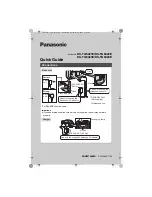
VS1 Installation, Configuration & Operating Guide
121
dsp enable
—This command must be issued at least once after PBX startup to enable DSP
volume adjustments. It is good practice to issue this command at the beginning of any Command
Script that performs DSP volume adjustments.
Note
The dsp enable command must be issued before any dsp vol command is acted upon by
the system.
dsp vol {co|ext|
port
} ={
n
} {in|out}
—This command allows CO and Extension port
volume adjustments through the Host Adapter DSP. Each port (T1 or PEU) has two settings
associated with it: one controls the volume level IN to the port and the other controls the volume
OUT of the port. For example,
dsp vol co =5 in
would change the incoming volume on
every CO port to 5 dB. (Valid range = -12 to 12 dB, default is 6 dB for CO IN on analog ports, 0 dB
for CO IN on T1 ports, 0 dB for CO OUT, -6 dB for EXT OUT, and 0 dB for EXT IN)
dump call
—Displays the current status of the paging queue. This queue contains Auto Pages and
Pager Notifications that are currently being dispatched.
dump page
—Displays the current status of the Pager Notification queue. This queue contains
Pager Notifications that are scheduled for later release.
enable {
port
|all}
—Enables a port previously disabled.
err
—Displays the current status of the Switch Card and Host Adapter Card(s).
exit
—This command shuts down the PBX software and reboots the TVS. Can only be issued from
local console (monitor and keyboard connected to TVS) and not from an RSA session.
grpid [off|on|0|1]
—Controls the operation of the Answer Group function. When GRPID is
ON, Answer Group picks up calls within the same group only. When GRPID is OFF, Answer Group
picks up calls system-wide. Typing GRPID by itself displays the current setting. (Default = ON/1)
help
—Displays a list of some of the available commands.
ls [acd|all|co|ext]
—Displays a line status of ports. The
ls acd
command displays a
summary of configured ACD groups.
ls co
and
ls ext
displays a list of CO or Extensions,
respectively. The
ls all
command lists all ports, including Paging Zones, Auto Attendants, Park
Zones, and so on. For more information, see “Line Status Symbols,” in Installation, Configuration,
and Operating Guide.
modem answer
—This command causes the TVS modem to go off-hook in answer mode, similar
to issuing
modem send ata
.
modem reset 1
—Resets the TVS modem and forces it on-hook, terminating the current RSA
session.
modem send {
command
}
—Sends the specified command string to the TVS modem in
command mode. Be sure to include
at
at the beginning of the string.
pause [
n
]
—Pauses the current command script for {n} seconds. The
pause
command by itself
creates a 1 second pause. (Valid range = 1–60 seconds)
play {
port
} {
filename
}
—Plays the specified voice file over the specified port. The port
number is zero-based hexadecimal. For a phone connected to Port 9 on the PEU, type
play 8
va\$va944.pcm
. Because the Music on Hold Loop Tape is configured for continuous play,
typing
$va946.pcm
generates a File Open! error message. When using the
play {
port
}
{
filename
}
command, type
r
for repeat to hear the file.
portscan
—
Identical to sysinfo command.
rec {1|2} {
filename
}
—
Records a voice file of the file name specified using the Music1 or
Music2 inputs on PEU A. After issuing the command, press the
SPACEBAR
to begin recording and
ESC
to end.
Summary of Contents for VS1
Page 16: ...Hardware ...
Page 62: ...Tel Site ...
Page 93: ...VS1 Editor ...
Page 180: ...Station Options ...
Page 208: ...Reference ...
Page 219: ...VS1 Installation Configuration Operating Guide 211 Outbound CO Call ...
Page 254: ...246 Reference Reload Changes dialog box ...
Page 274: ...Index ...
















































